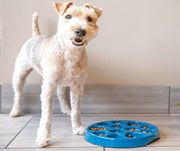Adopting Dogs Vs. Shopping For Dogs

Are you thinking about adding a dog to your family? There are many options to choose from when thinking about where to get a dog from. You can buy a puppy from a breeder or store, or you could go the adoption route and adopt a dog from your local animal shelter. No matter which route you go, it's important to know exactly where your dog is coming from to make sure there are no surprises after you get your new furry family member home.
ADOPTION SAVES LIVES: RESCUEING A SHELER DOG
Not sure if you want to adopt or not? Here are a few stats that can help you make that decision when thinking about adopting. Every year, approximately 6.5 million companion animals (dogs and cats) enter US animal shelters as strays or surrenders. Of those, about 3.3 million are dogs. The most common reason dogs are surrendered to animal shelters is because of pet problems. Pet problems are defined as problematic behavior, aggressive behavior, grew larger than expected, or health problems the owner couldn't handle. Out of 3.3 million dogs, only about 620,000 are reunited with their owners. Last year, approximately 670,000 dogs were euthanized, and 1.6 million dogs were successfully adopted. Many dogs adopted from shelters end up making absolutely great pets! A few pros to adopting a dog from your local animal shelter is no potty training! Most dogs that come from shelters are already potty trained and know when they need to go outside. Another pro is shelter dogs are easily affordable. Most shelters only require about $50 to adopt a dog, or even waive fees if the shelter is overcrowded. One of the best pros to adopting a dog from a shelter is that you are giving the dog a second chance at life! Your new dog will love your for that and will always be loyal to you.
PURCHASING A DOG FROM A BREEDER
When thinking about purchasing a dog from a breeder, you need to do your research to make sure you are not purchasing a puppy from a puppy mill. A puppy mill is a commercial dog breeding facility that focuses on their profit instead of the animals well-being. There are an estimated 10,000 puppy mills in the US. The females at puppy mills are often bred back-to-back after pregnancies without any recovery time in between. They often breed females to the point at which they are no longer able to reproduce. In that situation they are no longer needed and are usually killed. Most dogs that come from puppy mills suffer from multiple infections and are confined to small cages with their siblings and mothers. They are also often weaned from their mothers way too soon, which causes other problems later in the dogs life. On the outside, you may think you're purchasing a puppy from a safe breeder, but when you get your puppy home you may find that he or she is sick with infections.
These are sad facts to think about, yet very necessary to know when thinking about buying a dog from a breeder. Being an informed consumer gives you the freedom and strength to choose whether this behavior and habits are supported. A couple of tips to know you are purchasing your puppy from a safe and responsible breeder are shown below:
- The breeder should not allow you, under any circumstances, to take your puppy home until the puppy is 8-12 weeks old.
- You should visit the breeders home and meet at least one of your puppy's parents.
- The breeder should genuinely care about the puppy, you, and your living arrangements to make sure the puppy is going to a good home with a good environment.
- The puppy and parent should not be scared of the breeder and should be friendly with strangers
- Some breeders may even require you to sign a contract stating that you promise to provide your puppy with the best environment and keep up with it's health.
- You puppy should always come with it's first round of shot records, etc.
Purchasing from a responsible breeder is a good option for people who prefer to have pure bred dogs. However, people are being encouraged more and more to adopt primarily from shelters to discourage the purchasing of puppy mill dogs and put the mills out of business. By adopting a puppy or kitten from a shelter, you support your local city shelters and will reduce the number of animals euthanized daily.
I know you may be thinking, "But I'm only one person, how can I really make an impact on this difficult situation?" But know this. Adopting one dog will change a life forever. For that life you have successfully become your new dogs hero and given it a chance at life that would never had happened without you. Every single adoption is impactful, no matter how small or big the dog is.
I'VE ADOPTED MY DOG! NOW WHAT?

Successfully adopted your new dog? Perfect, the next step you need to take is dog-proofing your home. This means hiding or covering up all visible wires, buying essential dog supplies like food, a shelter, a collar and leash, a couple toys, and a bed. Always try to adopt your dog on the weekend so that you can be there at home with them while they adjust to their new surroundings. Joining a new family can be pretty scary and nerve-racking. So, give your new dog its space, let them explore, and have patience.
After your new dog has explored his new home, show him where his food and water bowls are located. If you have a tall dog, you might want to try out an elevated food and water bowl, like the Petmate Easy Reach Diner (shown right). This will help keep your dogs neck stress-free during his feeding times and promote healthier eating habits. Next, show your dog his kennel area. This space should be set up before you bring your dog home and should be in a quiet corner of your home. This area will end up being your dog's safe space to go to when he needs to relax and chill out. You typically want to get a plastic kennel that's just large enough for them to turn around in and lay down. Much like the Petmate Sky Kennel (shown below), which comes in a variety of sizes for all dog breeds. If you buy a kennel or crate that's too large, your dog may use that excess space as a potty area, which you DO NOT want to happen. To make the kennel feel more like home, add a bed inside the kennel to make it cozy and warm for your dog.

HOW TO REDIRECT NIPS DURING ROUGH PLAY
Now that your new dog is happy and settled in his new home, he will start to play with his new family members and show off more of his personality. Sometimes, puppies and shelter dogs are not taught the right ways to play, which could cause your dog to play a little too rough. This could mean that while you're playing with your dog, he may nip at your hands or fingers, or not stop playing unless you yell. This means your dog is just excited to play, but may be too excited. If you've got a puppy, he may be teething, so try getting him a chew toy like the JW Puppy Connects (shown below). This puppy chew toy has many 3 different textured chew toys that screw into a durable nylon bone. They are all designed to engage your puppy's chew instinct and teaches them that toys are okay to chew on, not hands and fingers. Puppies also will require you to potty train them. That means taking your puppy outside once an hour the first few weeks to let them use the restroom. Try using puppy pads during the night so that you don't have to go outside in the middle of the night. Remember to reward their good potty behavior so that they understand going outside to use the restroom is the right thing to do. For older dogs, try strong chew toys to redirect rough play. This will teach your dog that they can chew on their toys as hard as they want, but not your hands.

REWARDING GOOD BEHAVIOR
Joining a new family can be intimidating, especially for pets who have been adopted. Transitioning into a new home with new family members takes time and patience. However, watching your shelter dog come out of their shell and warm up to you is very rewarding. So, try encouraging this good behavior with treats. Showing your dog it's okay to play and be themselves is a great way to help your dog transition smoothly into his new life. Besides just offering treats, spend time with your new family member by going on walks, playing outside, playing fetch or tug-o-war, or just by sitting outside petting your dog. The quality time spent together will help build a strong, lasting bond between you and your new dog that you both will cherish.

Sources:
Previous article

Related posts
View all-

National K9 Veterans Day: Why and How to Celebrate
National K9 Veterans Day is celebrated every year on March 13th. This year its on Saturday March 13th, 2024. This day was established to recognize and celebrate the contributions that Military Working Dogs.
Read Article -

Puppy Training Tips
Training your pup from day one helps set a solid foundation for good behavior and a well-adjusted adult dog. Puppies thrive on structure, and a predictable routine makes learning easier.
Read Article -

Spring Cleaning Tips for Pet Parents
Say goodbye to the winter germs and hello to all the new spring smells! The beginning of spring is the perfect time to clean your house. For pet owners, this can mean more in-depth cleaning in areas other people don't have to worry about. We will give you some helpful tips and tricks so that cleaning up after your pet seems a little less daunting. Read Article




